





The Surrealism Website
Enrique Chavarría (1927-1998)
Enrique Chavarría Servin, also known as Enrique Chavarría, was born in an old house in
the Colonia Escandon neighborhood of Mexico City where he lived a rather reclusive life
with his three maiden aunts. He trained at the Academía San Carlos in Mexico City
in the mid-1940s. At that time a number of surrealist artist emigres from Europe,
Leonora Carrington, Remedios Varo, Bridget Tichenor and Wolfgang Paalen had relocated
to Mexico, and Carrington and Varo were then living in Mexico City. In a rare interview he
said "I met Remedios Varo when she arrived in Mexico and hadn't begun painting yet, when
she was with Benjamin Peret. Clearly I feel an identity with her painting."
Chavarría suffered from a speech impediment that caused him to stutter and made
him uncomfortable in public and social situations, so he was not outgoing and would not have
been a active part of the social circles around Carrington and Varo. Instead he remained
in his house and dedicated his time to painting and studying alchemy.
The American Bryna Prensky took an interest in the younger generation of Mexican artists
and opened a gallery in central Mexico City in 1959. She was very drawn to Chavarría's work and
made an arrangement with him to buy all his paintings. This gave him an income and allowed
him to devote his life to painting.
Because of his reclusive nature, some art historians have tried to categorise his work as
'Outsider Art', however, on looking at his paintings we can see they are clearly in the style of
the European verist Surrealism of Varo and Carrington. He was deeply studied in alchemy and
various alchemical symbols, even visual quotes from alchemical manuscripts, appear in his
paintings, as we note in the untitled work of 1970 and his later piece Transmutation of 1983.
He so admired Varo's work that he adopted her pictorial language, using the same sort of
perspective and interior spaces she created, however, he added to this his grasp of alchemy.
He is certainly not a naive artist working in a vacuum, but one deeply immersed in the
surrealist tradition, European mythology, esotericism, alchemy, and is likely to have had some
understanding of depth psychology.
He described himself as a painter of fantasy, anatomy, alchemy, literature, mythology,
primitive art, and religion and listed Bosch, Varo, Carrington, and Ernst among his
inspirations.
He is, sadly, now almost totally neglected.
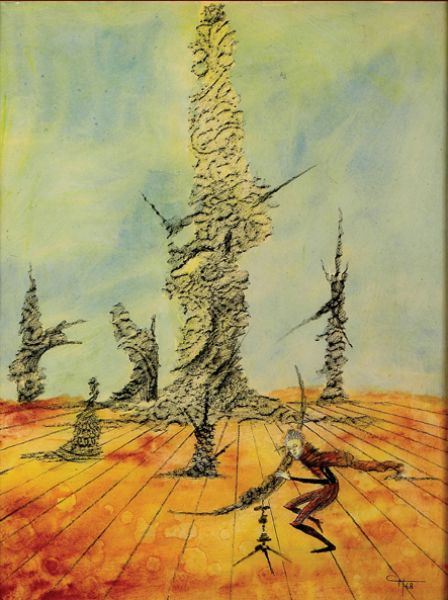
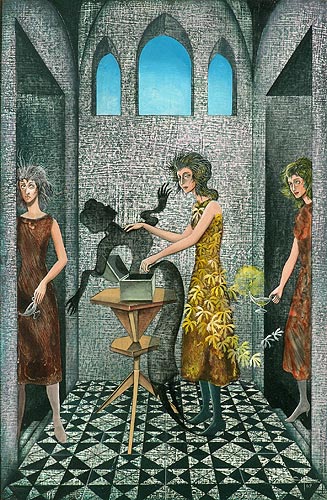
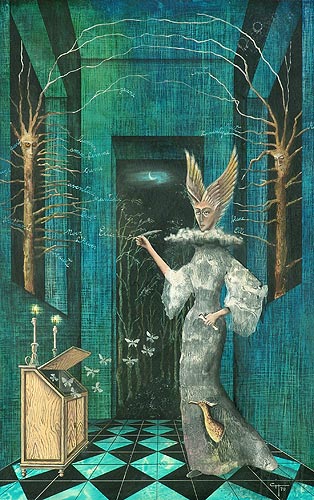
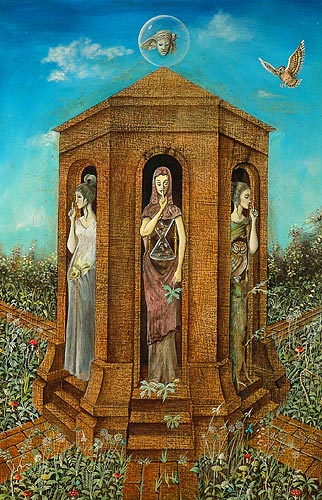
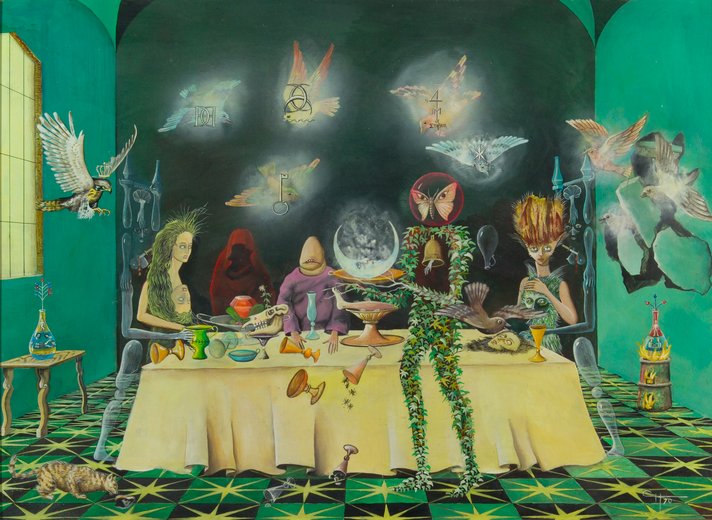
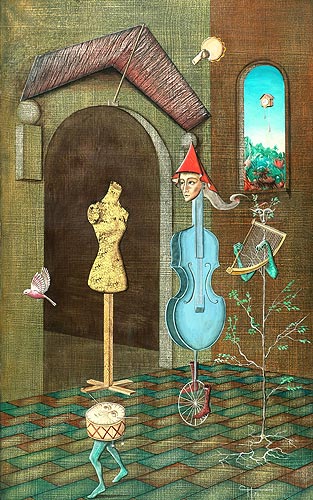
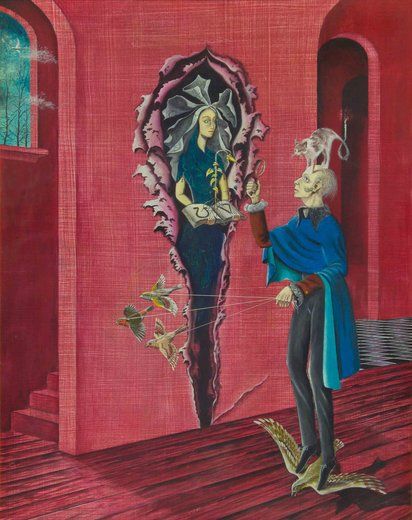
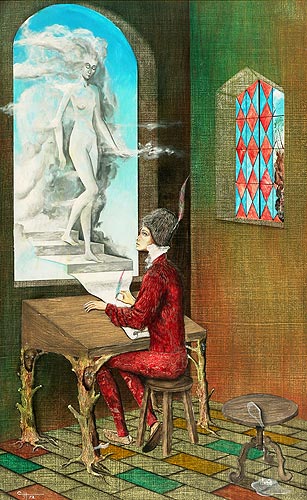
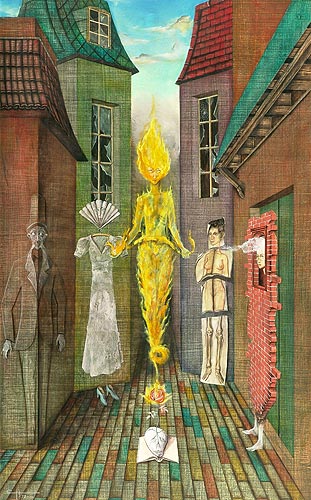
.jpg)
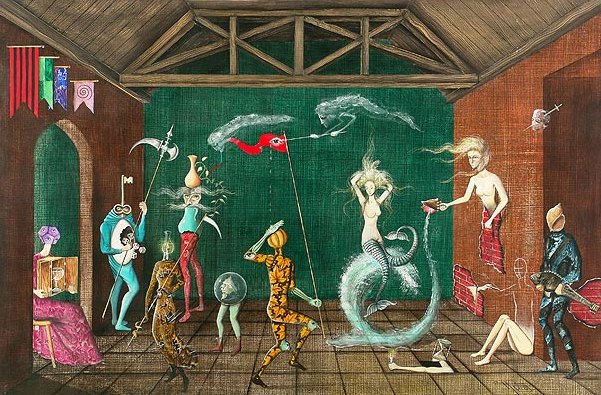
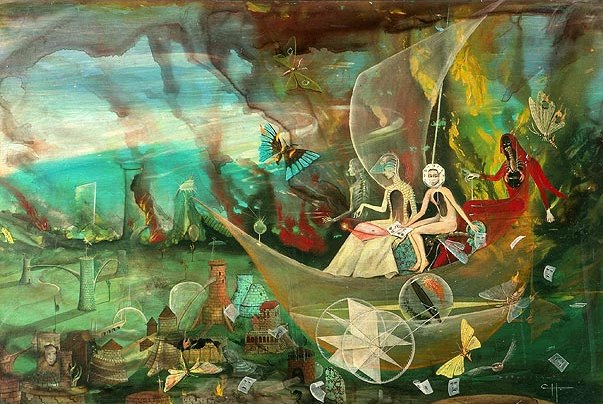
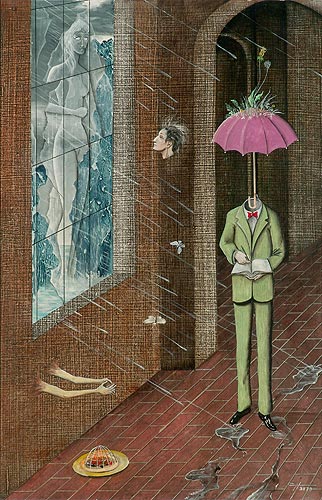
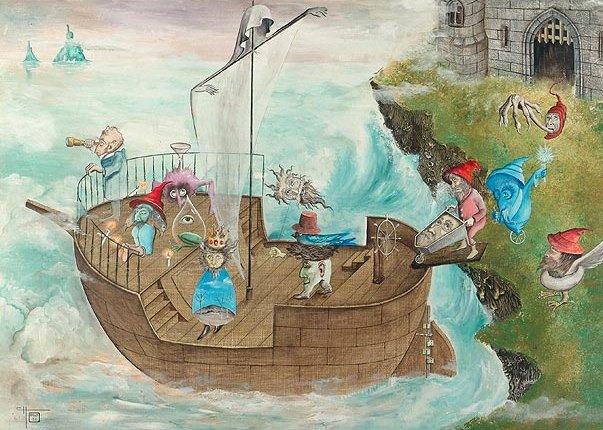
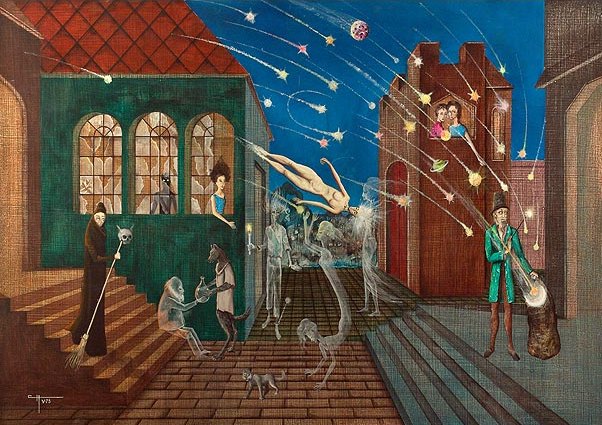
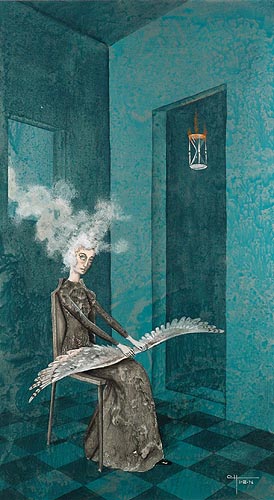
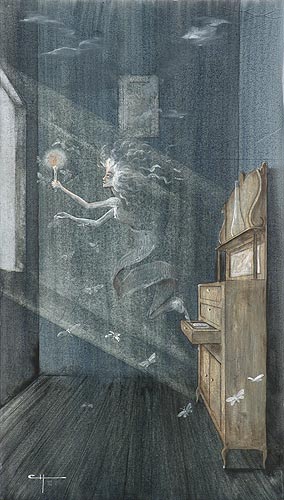
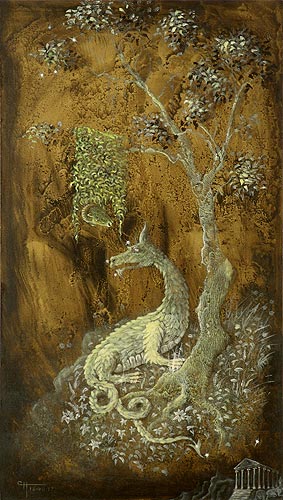
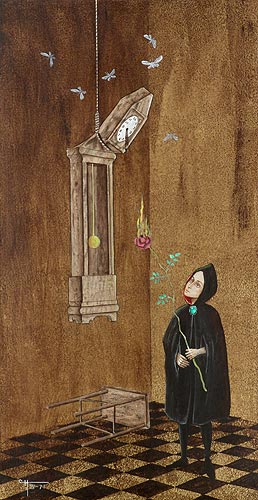
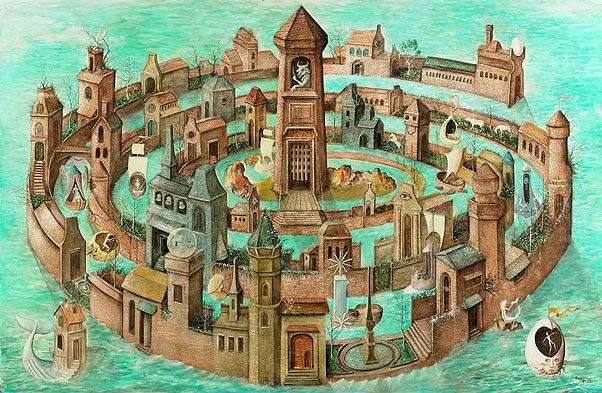
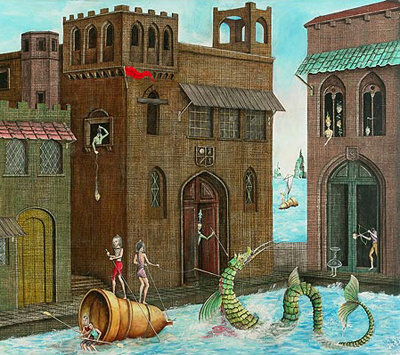
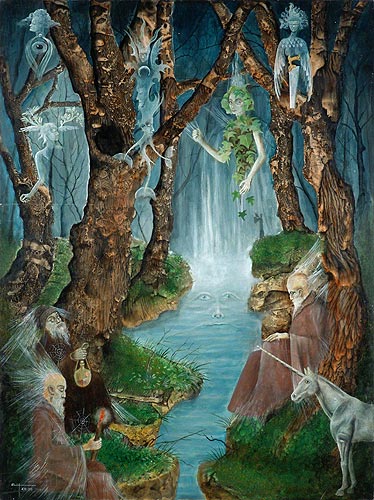
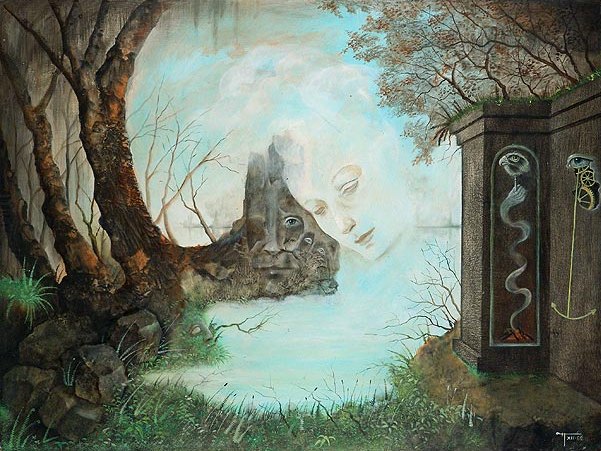
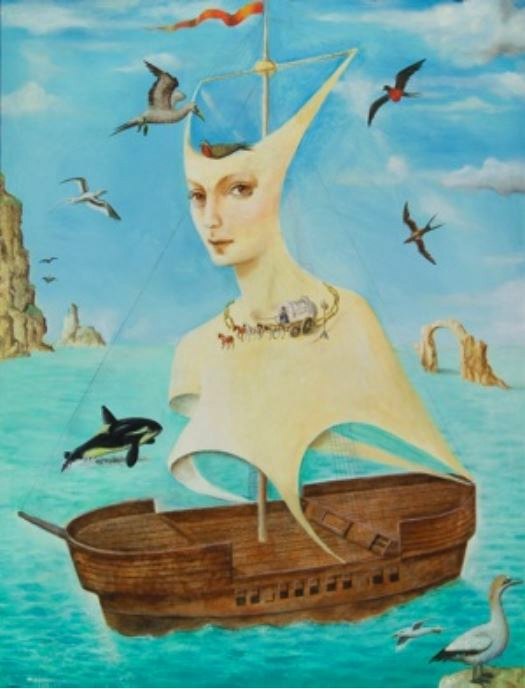
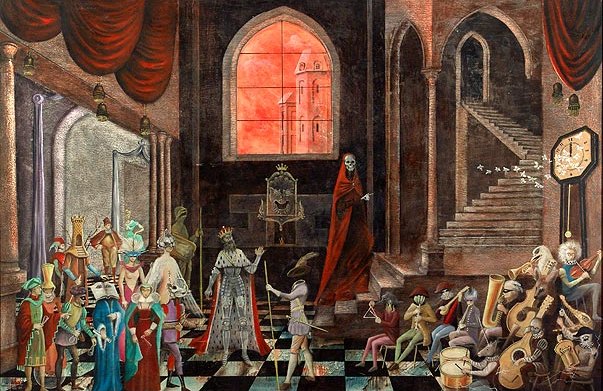
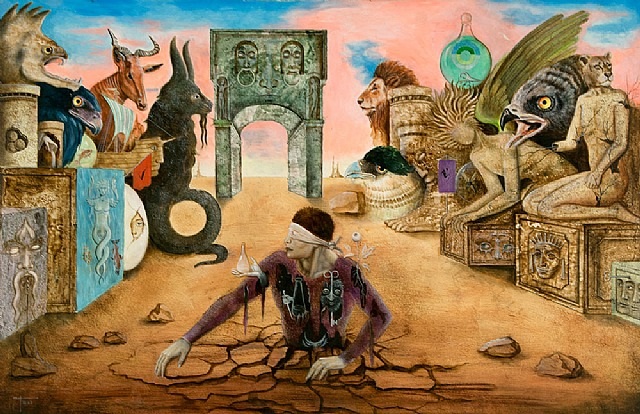
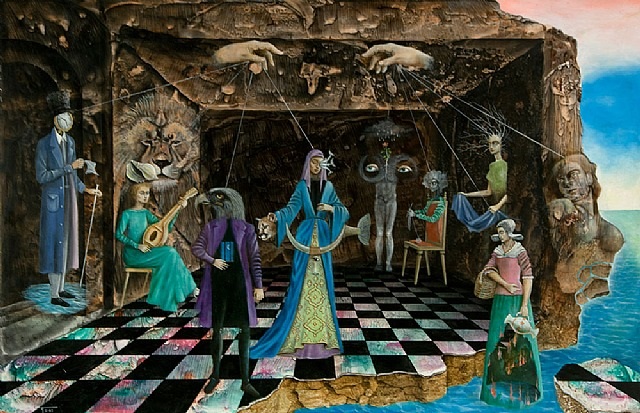
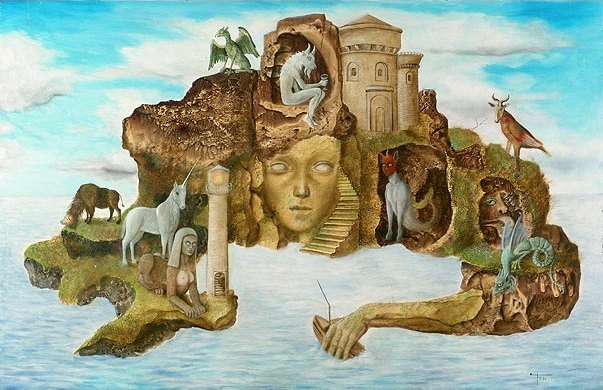
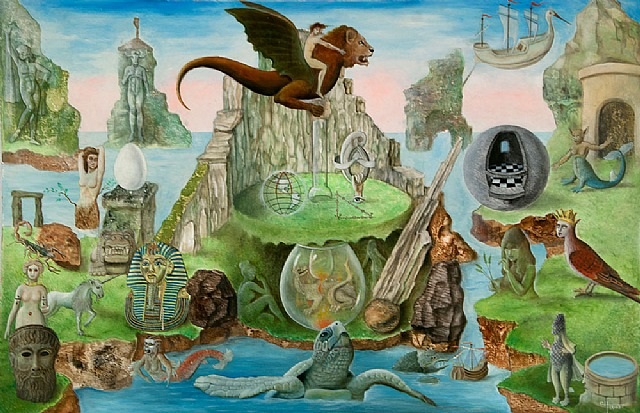
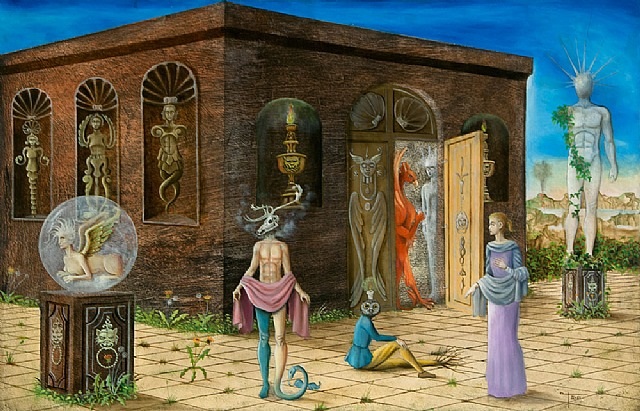
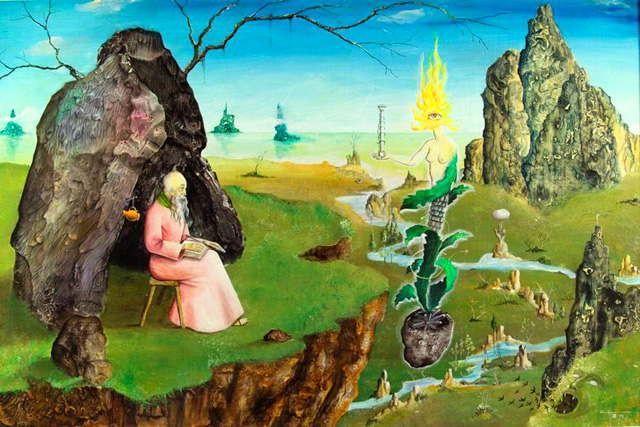

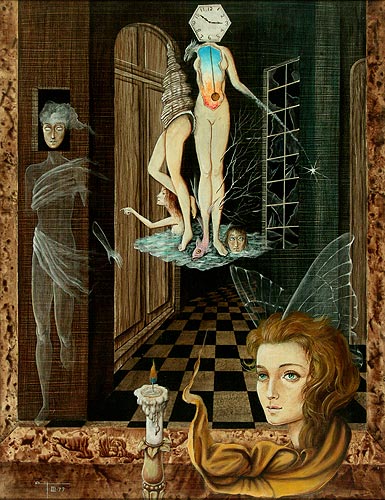
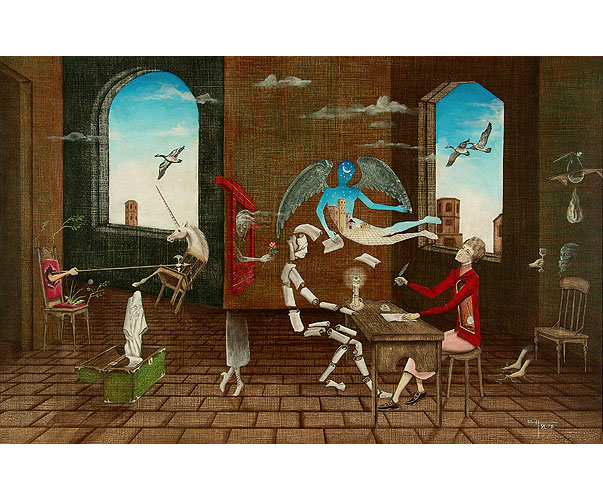
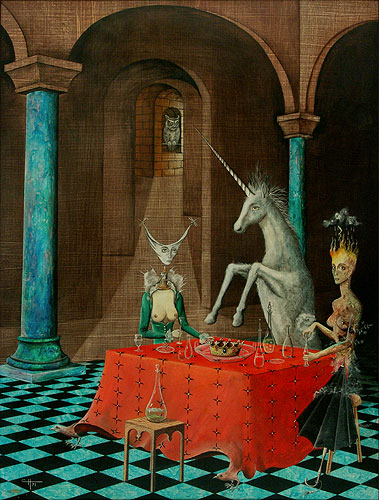















.jpg)
























